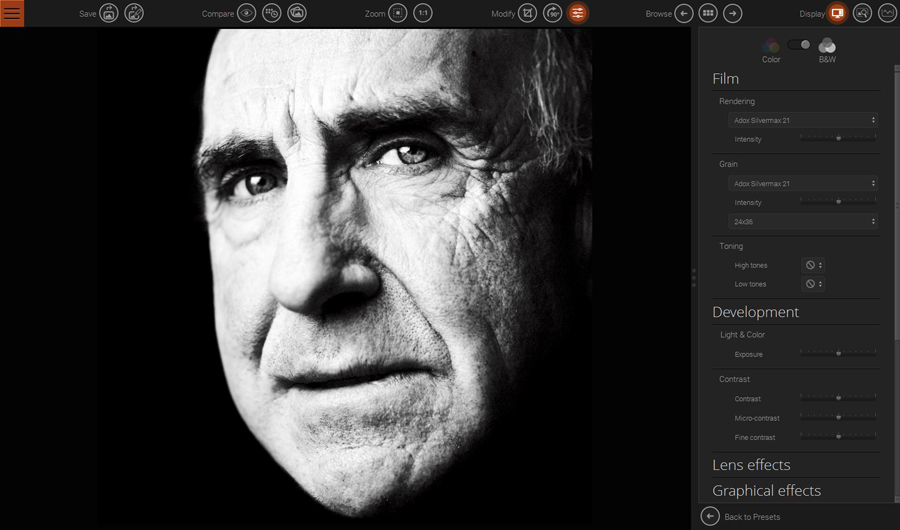

- Where are my presets in dxo film pack sotred update#
- Where are my presets in dxo film pack sotred pro#
- Where are my presets in dxo film pack sotred plus#
- Where are my presets in dxo film pack sotred mac#
i mostly just want to knock out a recurring monthly expense. I don't mind spending $150 or so if it's a legitimate lateral-ish move from lightroom and can handle fuji's RAW files well. I have not done any deep-dive research on any of these yet, just looked at some brief overviews and user reviews.which may or may not have been biased.
Where are my presets in dxo film pack sotred pro#
I know some software apps have issues with fujis x-trans sensor so getting fuji RAW files right will definitely be a deal breaker.Ĭapture One Pro (I really don't like how you can either pick ONE camera file type or pay extra for "ALL" types) I have some with x-trans sensor and some with the Bayer. Ive been using adobe products since the late 90's. I still need to edit the occasional photo and when I do, I still want something that is going to deliver quality results. The main bug fixes are a resolution for inability to pan the image when using perspective tools, and an issue with the the next / previous image buttons not working if the image browser didn't have focus.Not doing near as much photography as I have in years past and I'm having a harder and harder time justifying that adobe subscription. Newly-supported cameras are the Canon Rebel SL1 (aka Canon EOS 100D), the Ricoh GR, and the Sony Alpha SLT-A58. You can also tone black and white images without first applying a film simulation, and apply color filters and toning effects to color images.Īnd then there's DxO Optics Pro 8.2, which adds support for FilmPack 4 and three new cameras, as well as fixing two notable bugs and various other minor issues. Interestingly, you can now apply black-and-white film grain to color images, and vice versa. 62 film grain types are included, along with 18 color filters, and six toning types. For these last, a total of 10 are new, and six more have been updated with new effects. One of the handier features, given the vast quantity of presets available in FilmPack 4, is the ability to mark your favorite ones for quick recall in the future.Īs for the presets, there are now over 90 on offer, including 36 color film emulations, 26 for black and white films, and 33 designer presets.
Where are my presets in dxo film pack sotred plus#
There are eight textures to choose from, plus 12 edge defects, and 20 frame types. For both textures and frames, you can control the orientation textures also provide control over effect strength. Additionally, there are new tools to control vibrancy, microcontrast, luminance and blur vignetting (including recentering), textures, edge defects, and frames. There's also a new crop tool with rule-of-thirds grid display, and built-in printing functionality. There's also a new favorite presets tab, and a presets search function, both acknowledgements of the ever-increasing number of presets available to you. On the right, the controls panel has been reorganized to be more intuitive, and now separates effects and settings into their own panes. The new, leftmost pane can track changes made to your images by saving them as snapshots, letting you quickly backtrack on tweaks you've made to an image, or making it simple to compare the current version with an earlier one to help decide if you're going in the right direction. The most obvious change in DxO FilmPack 4 is its new four-pane user interface, one more than in the previous version.
Where are my presets in dxo film pack sotred mac#
Both apps support Mac and Windows.ĭxO FilmPack 4 has an overhauled four-pane user interface. If you do choose to use FilmPack 4 with Optics Pro, though, you'll need to run the brand-new version, as FilmPack 4 is compatible only with Optics Pro 8.2 or later. Together, the two promise a complete solution for maximizing image quality and recreating your artistic vision, but FilmPack 4 needn't be used with Optics Pro if you've already built your digital darkroom around another app - it's also compatible with Adobe Photoshop CS3 to CS6, Adobe Adobe Photoshop Elements 9 to 11, Photoshop Lightroom 3 or 4, and Apple Aperture 3. Optics Pro version 8.2, meanwhile, is a more straightforward level-up, adding support for three new cameras, as well as compatibility with the updated FilmPack release.
Where are my presets in dxo film pack sotred update#
A new version of FilmPack has just hit retail, and it arrives alongside an update to Optics Pro, the company's flagship image processing application.ĭxO FilmPack version 4 is a major update, and brings with it a revamped interface, and a generous selection of new tools and features. It's precisely that experience which French software company DxO Labs aims to resurrect with its FilmPack product, launched way back in 2006. The immediacy of your digital camera is great, but do you ever find yourself pining for the look of your film photos? Trying different film and processing types was half the fun, and once you'd found a combination you liked, replicating the effect was simple.


 0 kommentar(er)
0 kommentar(er)
